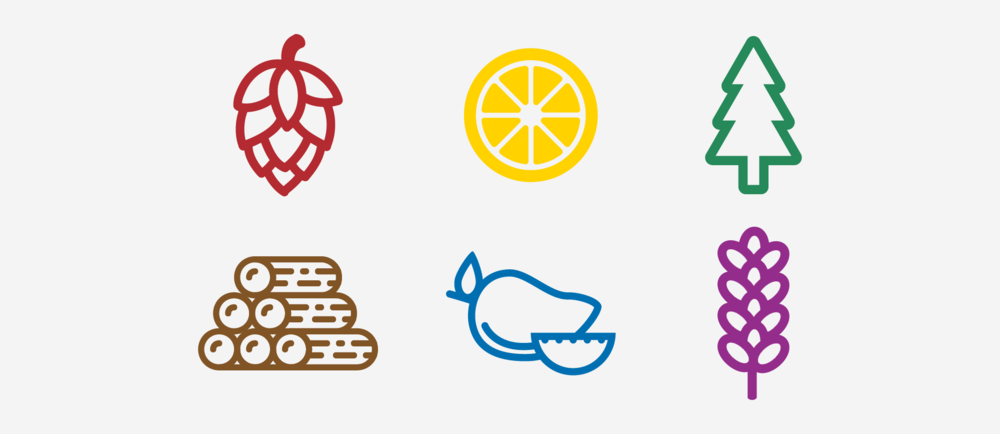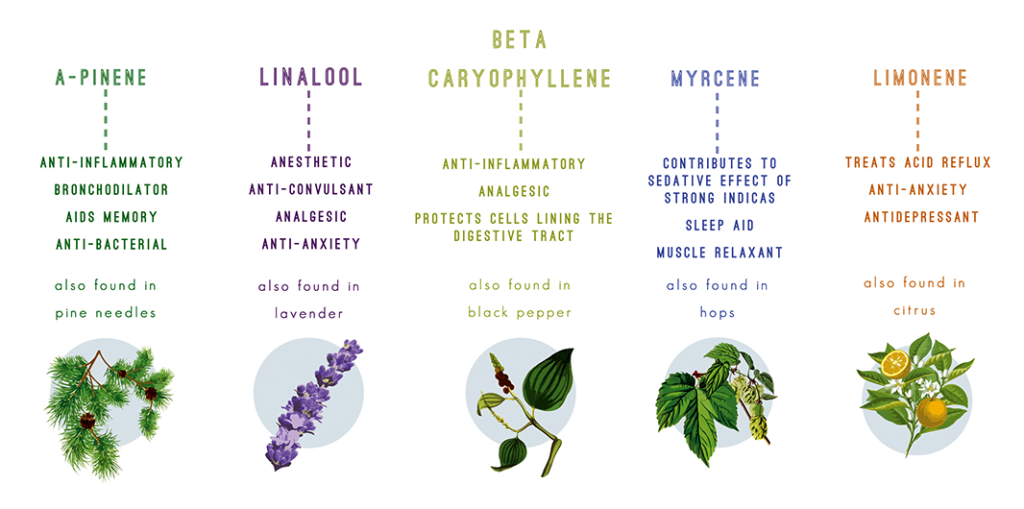Some people, when they get a whiff of cannabis, will say it smells grapefruit-y, or lemony, while others might pick up aromas of rosemary, lavender, cloves or cinnamon. They aren’t imagining things. This is the handiwork of terpenes, the organic compounds that largely makeup the essential oils found in cannabis.
These organic compounds may not be as thoroughly discussed as their THC and CBD counterparts, but they are responsible for distinctive aromas of cannabis, and they may have some health benefits of their own. With legalization spreading across much of North America, now is as good a time as any to learn about cannabis, and this article will attempt to shed some light on one of the lesser known aspects of the cannabis experience: terpenes.

What Are Terpenes?
As mentioned, terpenes are a class of organic compounds. In addition to their contributions to cannabis, they can also be found in conifer trees (that classic, pine-y aroma you get rub a tree needle between your fingers) as well as in hops, which give beer their skunk-y, citrus-y and pine-y aromas. To the plants that produce terpenes, they are simply meant as a kind of natural pesticide, but their olfactory and culinary properties made them immediately desirable to humans.
Common Terpenes in Cannabis
To put things in perspective, let’s look at a few common terpenes you find in cannabis, as well as the aromas they produce:
- Pinene – as the name might suggest, this terpene produces aromas and tastes of conifer and pine. Many report smelling a distinctive rosemary aroma as well with pinene.
- Myrcene – this is a very complex terpene, aroma-wise. It is musky and earthy, with spicy notes of cloves and herbs. It can also be fruity, with the predominant fruit profile being mango.
- Linalool – You actually find this particular terpene in a lot of soaps and shampoos. It has a floral quality reminiscent of lilacs and lavender.
- Limonene – You might be able to tell from the name that limonene has a predominantly lemony aroma and taste. It also has a juniper aroma.
- Beta Caryophyllene – This is a woodsy aroma, like a classic wood cabin. There are notes of balsam and black pepper here.

Beyond the Smoke
Smoke isn’t the only way – nor the best way – to get the taste and aroma of cannabis terpenes. Newer products like premium infused cannabis teas and edibles give you the complex, evocative and varied aromas of terpenes without any damage to your lungs. And if you are averse to THC (the component responsible for cannabis’ intoxicating effects), you can choose a tea or edible that is very low in THC, and high in CBD (the non-intoxicating component that aids in pain- and stress-relief).
You don’t necessarily need to get “high” to enjoy the sensory and health benefits of terpenes (though no one would fault you for enjoying it). With cannabis becoming a more normalized presence in society, there are many new forms of cannabis available, for all different types of experiences. If you want to know what the future smells like, here it is: it smells a lot like terpenes!